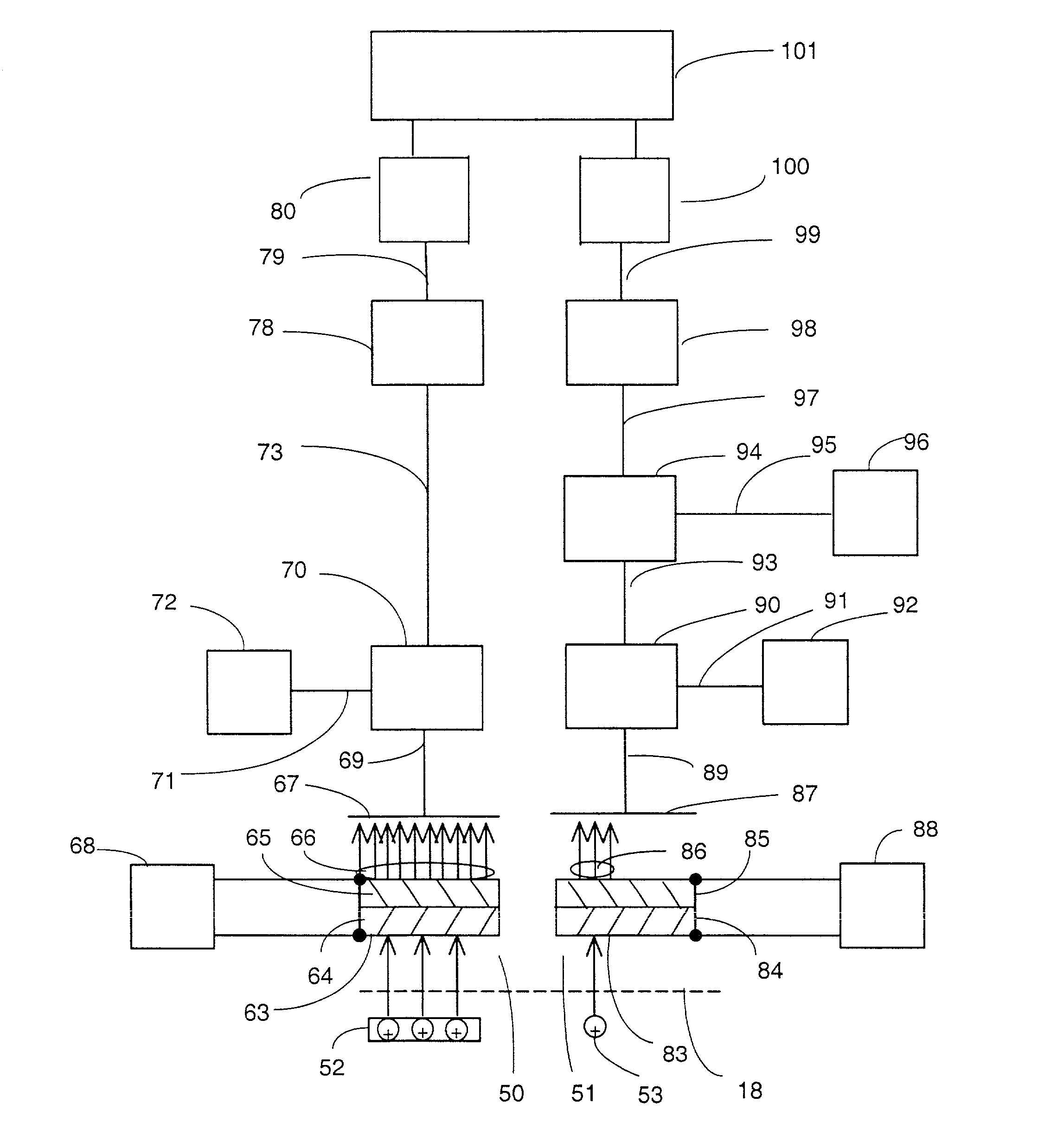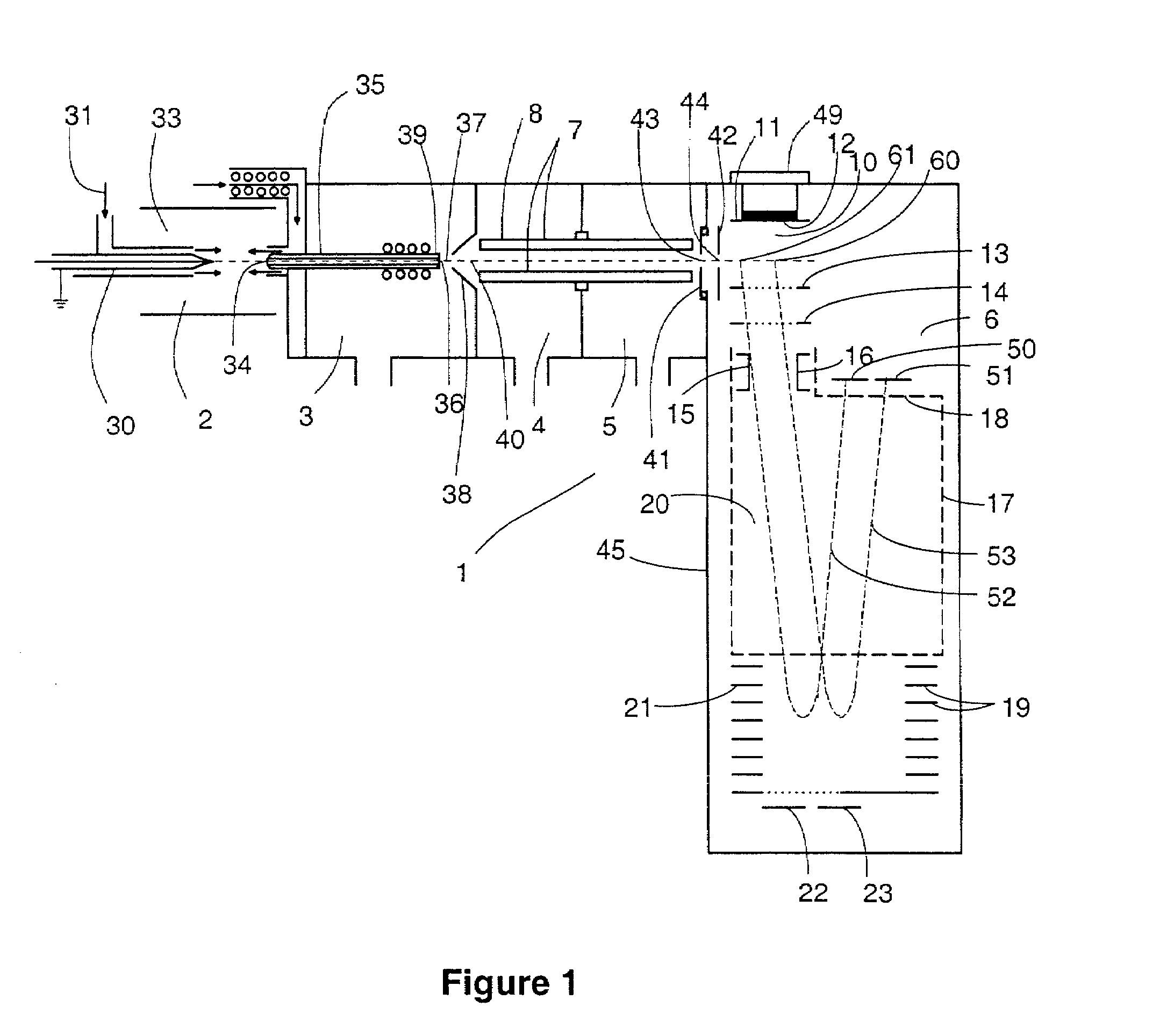Because ions arriving at the
detector of a ToF
mass spectrometer are typically dispersed over some distance orthogonal to the ToF analyzer axis direction, a non-planar
detector surface will produce a variation in flight distances, and therefore flight times, for ions of any particular m / z value, resulting in a degradation of the m / z resolving power.
Generally, detectors of all types are limited by practical considerations in the maximum absolute amplitude of output signal that can be produced.
However, this
gain is often insufficient to produce a measurable output signal from single ions or from some few ions arriving at the
detector simultaneously.
Unfortunately, it is usually impractical or undesirable in practice to rapidly adjust the
gain of the detector from the acquisition of one spectrum to the next, because it is generally necessary to allow some time, typically on the order of milliseconds or longer, for the detector response to stabilize after the
gain is changed.
This
delay would result in a severe reduction of the speed with which ToF spectra may be recorded, leading to a loss of sensitivity within a fixed
acquisition time.
Further, spectral acquisition speed is important in itself in many time-dependent analyses, such as when a mass spectrometer is used as a detector for a gas or liquid
chromatographic separation, and a reduction in spectral acquisition speed would
restrict the resolving power of the
chromatographic separation.
Otherwise, a significant number of single ions that produce detector output pulses with amplitudes that fall within the lower-amplitude region of the
pulse height distribution, will not be recorded, resulting in substantial error in the intensities of small m / z peaks relative to that of large m / z peaks in a spectrum.
Then, however, a significant number of
single ion hits may not produce a signal amplitude at the ADC input that is large enough to register 1 bit count in the ADC output, resulting in substantial inaccuracies in the relative intensities of less intense m / z peaks in the measured spectrum.
On the other hand, the TDC approach is severely restricted in
dynamic range within individual spectra, because a TDC is unable to distinguish between the arrival of a
single ion and the simultaneous arrival of more than one
ion.
Therefore, the use of a TDC to
record m / z spectra is limited to situations in which the
ion flux is low enough to ensure that the probability of arrival of more than one
ion within the
dead time of the TDC is less than about 0.1 for the most intense peaks in a m / z spectrum.
Hence, the use of a TDC for accurate measurement of relative ion abundances is limited to analytical situations in which the ion flux is relatively low, and in which
sufficient time is available to integrate enough individual spectra to achieve acceptable signal dynamic range.
This approach still limits, however, the signal dynamic range that may be accommodated within a m / z spectrum to the inherently limited linear dynamic range of the multiplier.
However, these types of structures do not typically produce output signals with as fast a
response time as that from a so-called ‘channel-plate’
electron multiplier (CPEM).
However, because of its compact structure, it is not possible or practical to incorporate an intermediate collector
electrode at an
intermediate stage of multiplication.
This approach obviously becomes very cumbersome and expensive to implement due to the multiplicity of parallel TDC counting
electronics that are required.
 Login to View More
Login to View More  Login to View More
Login to View More 


